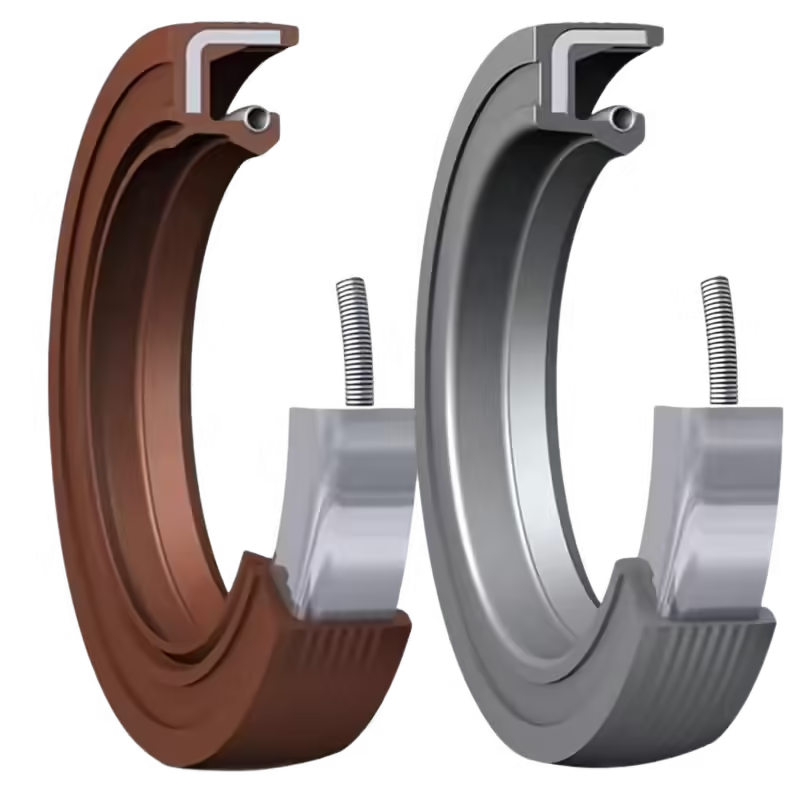What Are the Common Causes of Oil Seal Failure? Comprehensive Guide for Industrial Buyers
Introduction: Understanding Oil Seals and Their Critical Role
Oil seals are essential components in mechanical systems, designed to prevent lubricant leakage, maintain pressure, and keep contaminants out. For industrial buyers managing heavy-duty equipment, seal failure can lead to significant downtime, safety hazards, and increased operational costs. This guide explores common oil seal failure causes, providing practical insights and real-world applications to help you maximize system efficiency.
Improper Oil Seal Installation: A Common Pitfall
Incorrect installation remains one of the leading causes of oil seal failures. Common installation errors include:
- Seal lip damage: Improper handling during installation.
- Misalignment: Incorrect positioning leading to uneven wear.
- Use of inappropriate tools: Resulting in structural compromise.
To ensure optimal sealing performance:
- Employ specialized installation tools.
- Follow precise alignment guidelines.
- Train maintenance teams on proper installation techniques.
Material Incompatibility: Choosing the Right Seal Material
Selecting incompatible seal materials for specific operating environments can drastically shorten seal life. For instance, using NBR seals in high-temperature conditions can lead to early degradation.
| Material | Temperature Range | Chemical Resistance | Cost | Application Example |
|---|---|---|---|---|
| NBR | -40°C to 120°C | Moderate (oils, fuels) | Low | Automotive, general industrial |
| FKM | -20°C to 250°C | Excellent (chemicals, high-temp oils) | High | Aerospace, high-temp sealing |
For detailed material comparison, click here. Always consult seal experts for critical application matching.
Excessive Shaft Wear and Surface Irregularities
Worn or damaged shaft surfaces can accelerate seal degradation. Ensuring the correct shaft conditions is critical:
- Maintain recommended Ra surface finish (0.2–0.8 μm).
- Confirm shaft hardness is at least 30 HRC.
- Regularly inspect and recondition shafts to extend seal life.
Incorrect Seal Size or Design: Precision Matters
Selecting incorrect seal dimensions or designs often leads to leakage, blow-outs, and rapid wear:
- Clearly differentiate between standard seals and custom-engineered seals.
- Use precision-engineered seal profiles tailored to your system’s specific operating conditions (pressure, media, temperature).
Operating Beyond Design Limits
Operating parameters that exceed design limits (speed, temperature, pressure) significantly reduce seal lifespan. Indicators of seal overload include:
- Hardening
- Extrusion
- Cracking
Always align the seal’s specifications with your equipment’s operational requirements.
Contamination and Foreign Particles
Ingress of contaminants such as dirt, metal shavings, or water can cause abrasive wear:
- Implement dust lips and exclusion seals in highly contaminated environments.
- Pair oil seals with protective components for rugged industrial applications.
Inadequate Lubrication: Essential Maintenance
Proper lubrication is vital for reducing friction and controlling temperature:
- Avoid running seals dry or using incompatible lubricants.
- Follow best practices for initial lubrication and scheduled relubrication intervals.
Aging and Natural Seal Degradation
Environmental factors like UV exposure, ozone, and thermal cycling lead to natural seal deterioration:
- Identify aging signs: cracks, elasticity loss, surface hardening.
- Schedule preventive replacements based on expected service life.
Case Study: How Custom FKM Seals Helped Reduce Seal Failures by 30%
Industry: Heavy-duty hydraulic equipment
Challenge: Frequent oil seal failures due to harsh temperatures and chemical exposure.
Solution: Replacement of standard NBR seals with custom FKM profiles designed by DRO.
Result:
- 30% reduction in seal-related breakdowns.
- ROI within four months, thanks to reduced downtime and maintenance costs.
DRO Rubber provides tailored sealing solutions supported by professional expertise.
Conclusion: Proactive Seal Management is Key
Understanding major oil seal failure causes—installation errors, material incompatibility, contamination, and misuse—is critical. Prioritize proactive selection and maintenance practices to extend seal life and enhance system reliability.
Added Insight: Investing in Quality Seals Delivers Long-Term ROI
While low-cost seals might initially save money, high-quality seals provide substantial long-term benefits:
- Reduced downtime and maintenance expenses.
- Equipment lifespan extended by up to 20%.
- Lower total cost of ownership.
For expert advice or custom sealing solutions tailored to your application:
- Contact us at drorubber.com
- WhatsApp: +0086 15815831911
- WeChat: +0086 13784044874
Meta Title: Common Causes of Oil Seal Failure | Expert Guide for Industrial Buyers
Meta Description: Discover common causes of oil seal failure and how to prevent them. Learn practical tips for material selection, installation, and maintenance for industrial buyers.





